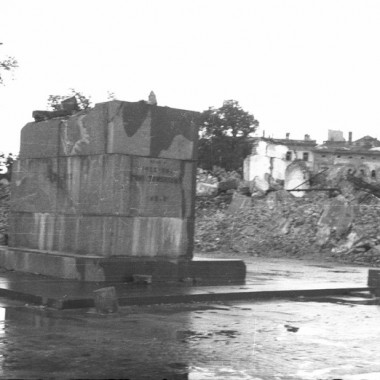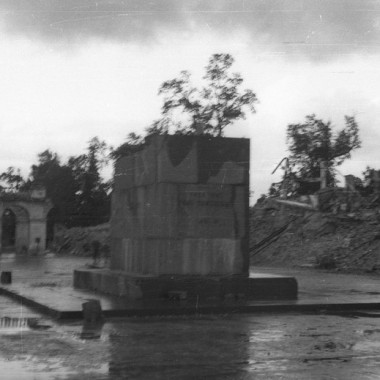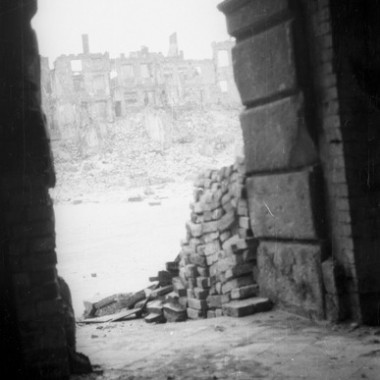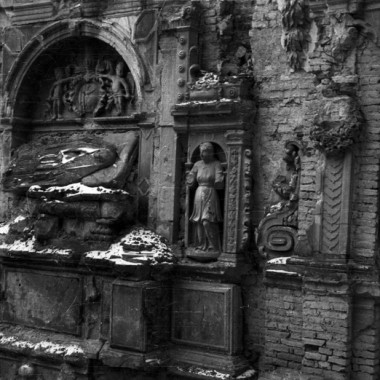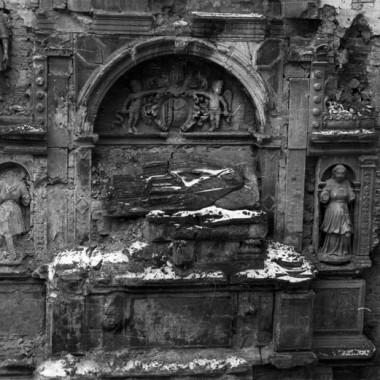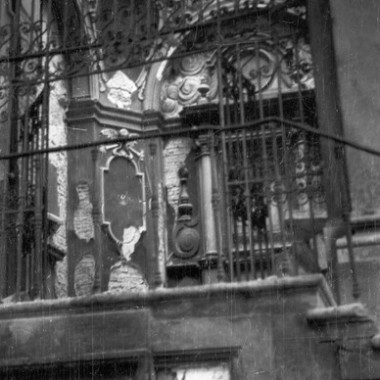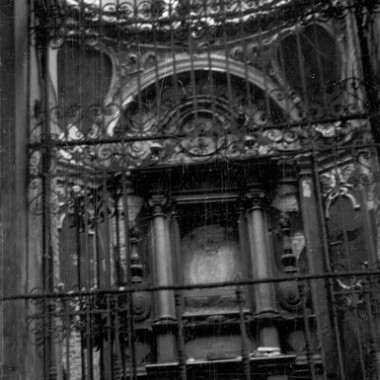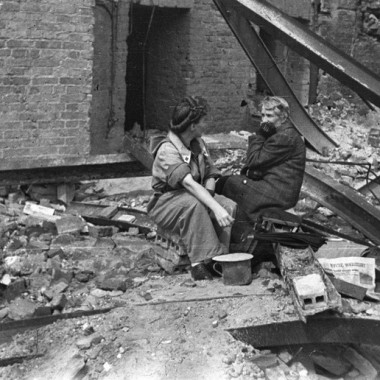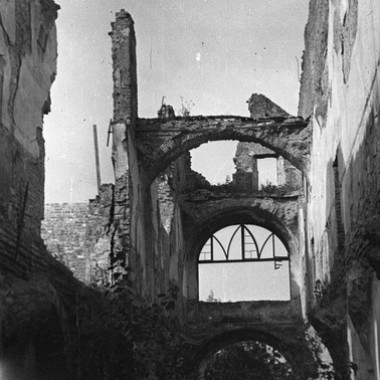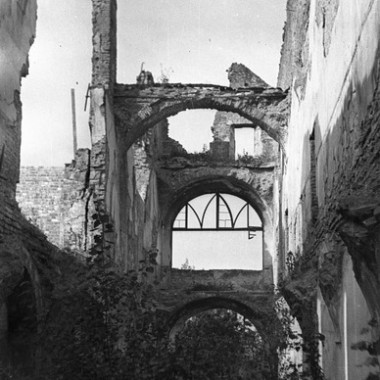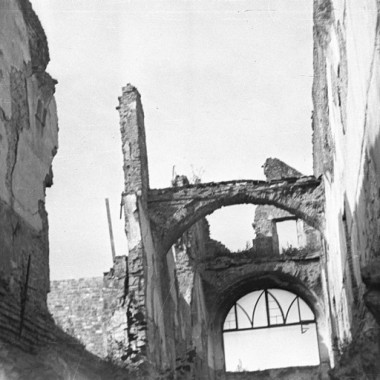Officer Cadet Cavalry Sergeant Zygmunt Sowiński "Ostoja" was born on 13 January 1912 in Warsaw. He joined the Polish Scouting Association in September 1923. He completed secondary commercial education and underwent a military training before the war. In 1939, he fought in the defence of Kovel. On 15 January 1940, he joined the underground Union of Armed Struggle, transformed later into the Home Army. In 1943, he finished the underground Infantry Officer Cadet School. He was active in the underground intelligence group "Kameleon". During the Warsaw Rising, he fought in the "Chrobry I" Battalion, first in the district of Wola, and later in the Old Town. He was a platoon commander and later deputy platoon commander in the 1st Company, with which he took part in the fights for Simon's Shopping Passage, Krasiński Garden and the Mostowski Palace. On evacuating to the City Centre through the sewers, he spent some time in insurgent hospitals - first at Konopczyńskiego Street, and later at Śniadeckich Street. He returned to his unit on 25 September and served as the economic officer until the fall of the Rising. Following the capitulation, he left the city among civilians. After spending some time near Kraków, he returned to Warsaw and got involved in the exhumation of the fallen in the ruins of Simon's Passage. He organised burials in the Military Cemetery in Powązki and raised funds for the care of the soldiers' graves. His activities had attracted the attention of the security service. Arrested in January 1949, he was sentenced to 8 years in prison under false witness statements charging him for an alleged "attempt to overthrow the system of the People's Republic of Poland". The sentence was reduced by three years under an amnesty. After his release, Sowiński worked for various small-scale industry institutions. He received numerous awards in the 1960s and 1970s, including the Home Army Cross and the Knight's Cross of the Order of Polonia Restituta. He died on 22 June 1978 in Warsaw.
The photographs by Zygmunt Sowiński "Ostoja" comprise an amateur combat chronicle the "Chrobry I" Battalion. They show soldiers of the unit in training, at leisure and with a captured anti-tank gun at locations in which they fought - the Krasiński Garden, the Arsenal, Simon's Passage. When wounded, Sowiński would take photos of fellow patients and personnel in insurgent hospitals, and on returning to his unit - of streets, barricades and damaged buildings. Sowiński's post-war photographs include documentation of destroyed Warsaw buildings, mainly the Old Town's churches. The series showing the ruins of the Church of the Holy Family at 7/9 ks. Siemca Street, which was not rebuilt after the war, is of particular value. A separate group of photographs includes images of the exhumation operation on the premises of Simon's Passage, which Zygmunt Sowiński managed in 1947.





